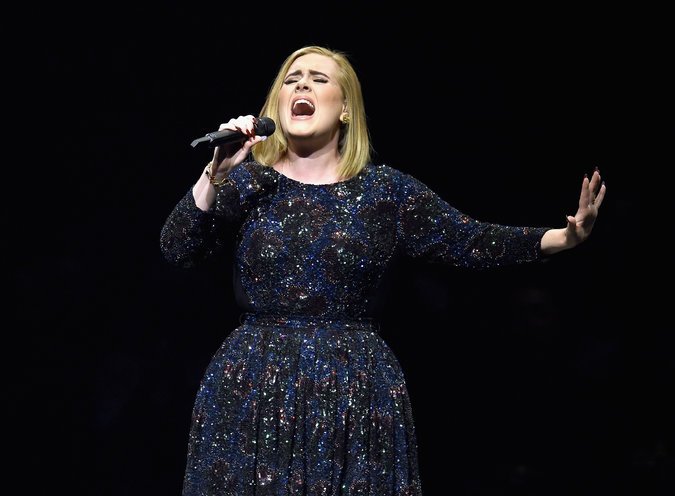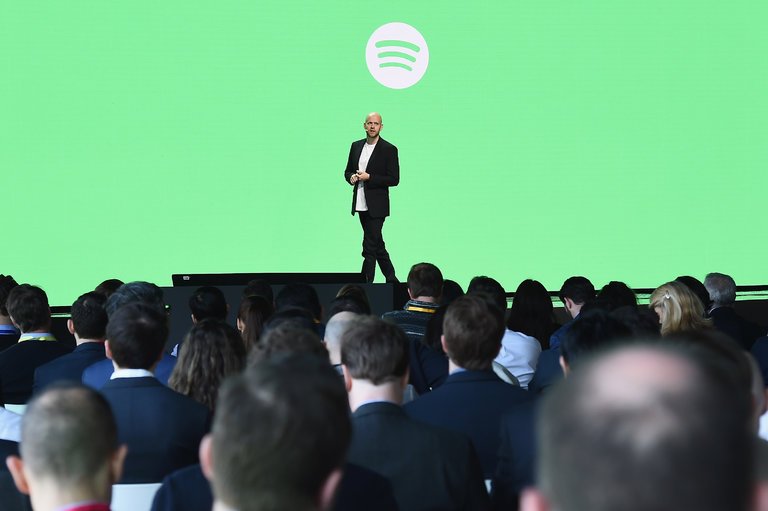Supported by
Media
After Driving Streaming Music’s Rise, Spotify Aims to Cash In
Back in Spotify’s early days, when the company was just a dozen people in a small office in Stockholm, Daniel Ek, a co-founder, liked to compare it to Apple and Google.
It was 2008, and the traditional music industry was collapsing. Yet as Spotify introduced its streaming service in a handful of European countries, it clung to what must have seemed an impossible ambition: challenging the titans of Silicon Valley to become the world’s leading outlet for online music, with a hybrid free-and-paid model that made record companies nervous.
After a decade, the start-up from Sweden has proved itself a worthy adversary, with 157 million users around the world, 71 million of whom pay for subscriptions. That is about twice the number of its closest competitor, Apple, which finally entered the subscription game three years ago.
And on Tuesday, in a ritual of success for any start-up, Spotify’s shares will begin trading on the New York Stock Exchange with a valuation that could exceed $20 billion. Underscoring the company’s self-image as a disrupter, it has shunned the usual circus of an initial public offering in favor of a rarely used — and potentially risky — process known as a direct listing, in which no new stock is issued and insiders can begin selling their stash on Day 1.
Advertisement
Continue reading the main story
Spotify’s path ahead, though, is far from clear. The company has never turned a profit. Its direct listing could backfire, spooking investors. Its competition is still a field of giants like Apple, Amazon and Google. And Spotify’s relationship with the music industry, which it relies on for the millions of songs it makes available for streaming, has been fraught since the beginning.
Continue reading the main story
“I don’t believe the industry would have embraced subscription without Daniel’s persistence,” said Richard Greenfield, a media analyst at BTIG Research. “If it were up to the labels, he would have failed years ago.”
In its defense, Spotify can point to its role in music’s financial turnaround. After a 15-year decline that made the industry a cautionary tale for all legacy media in the internet age, revenues from recorded music began to improve sharply around 2015. Last year, revenues — which include sales from CDs, downloads and subscriptions to services like Spotify — in the United States grew to $8.7 billion, their highest level in a decade, with streaming accounting for 65 percent of the total, according to the Recording Industry Association of America.
Continue reading the main story
Spotify predicts that by the end of 2018, it will have up to 96 million subscribers and $6.5 billion in revenue, according to a recent filing.
But Spotify’s revolution has been about more than numbers. Streaming has also brought about a shift in the business itself, transforming its underlying financial model and rewriting the rules for how hits are made.
In a sense, it has even changed the conception of music as a product. With streaming, a song is not a discrete item to be paid for and kept — like a CD or a download — but one part of a vast pool of music that listeners can access with a click. By design, it’s not too different from what the millennial generation had grown accustomed to through pirate sites like Napster and Grokster.
“It all worked because we recognized the consumer behavior,” Mr. Ek said at an investor presentation last month. “Fans wanted all the world’s music for free, immediately. So what we did was build a better experience.”

Mr. Ek and Martin Lorentzon, a Swedish investor, founded Spotify in 2006. Their service was built in part to mimic the experience of piracy — for years it used a peer-to-peer network to help songs play instantly — while operating legally and paying royalties.
Advertisement
Continue reading the main story
“Music was too important to me to let piracy take down the industry,” Mr. Ek wrote in a letter included in Spotify’s investor prospectus. The company declined to comment for this article, citing a quiet period before the public listing.
At first, Spotify was conceived of as a free, advertising-supported service. But realizing that record companies and music publishers would be more willing to grant licenses if Spotify also had a paid level, Mr. Ek and his team developed the so-called freemium model. Users can listen to any song free with advertising, or pay $10 a month to remove the ads and get perks like offline listening.
The free service is meant to lure customers to pay; according to Spotify, 60 percent of new subscribers begin as free users.
Music executives involved in Spotify’s early licensing negotiations were impressed by the company’s technology, and by its approach: Unlike other music tech start-ups at the time, most of which no longer exist, Spotify presented itself as a partner that could help the industry recover.
Still, the idea of simply giving music away was worrisome. So as a condition of granting licenses, the major record labels and Merlin, an organization that represents independent labels, received equity stakes in Spotify that are now worth billions of dollars. They have all said they will share with artists any profits from the sale of those stakes, although exactly how that will work remains unclear.
Once Spotify took hold — it came to the United States in 2011, after protracted talks — record companies discovered that its subscriptions delivered steadily recurring income, a relief from the industry’s seasonal ups and downs.
“Once you get someone in, you take away the unpredictable cycles we used to see,” said Ole Obermann, the chief digital officer at the Warner Music Group. “For most months of the year, we’d be behind and then count on a huge spike of sales around the holidays to make us profitable for the year.”
With the cost barrier to listening removed, consumer behavior began to change. Independent labels said their music was being listened to more. Playlists, programmed with a mixture of editorial supervision and machine learning, began to influence what people heard; according to Spotify, 31 percent of its listening now happens through its playlists.
Yet even Spotify’s biggest champions in the music industry, like Daniel Glass of the label Glassnote, notice that streaming and social media created a network effect that emphasized hit songs above everything else.
Advertisement
Continue reading the main story
“I remember sitting down with managers and artists and explaining that they will get paid; streaming is the future, whether you like it or not,” said Mr. Glass, whose label catalog includes Childish Gambino and Mumford & Sons. “But you’ve got to have hits.”

Spotify says its mission is to “unlock the potential of human creativity by giving a million creative artists the opportunity to live off their art.” But its dealings with artists are still delicate. An elite level of superstars like Taylor Swift and Adele have realized that they can still sell millions of CDs if they withhold their music from streaming, at least for a while. (Plenty of other stars, like Ed Sheeran and Drake, have embraced the format fully.)
And many who are not household names, from independent musicians to major songwriters, say the complex economics — each click is worth just a fraction of a penny, to be divided among Spotify, labels, publishers and, finally, artists and songwriters — make it impossible for anyone other than a pop star to make a living from streaming.
“The streaming model as it stands now is fundamentally stacked against middle-class artists and emerging artists,” said Blake Morgan, an independent musician and a label owner who has been an outspoken critic of Spotify and Pandora, another streaming service. “Ninety percent of the revenue is going to 1 percent of the artists.”
Tensions have also developed with the major record labels, which fear that as Spotify grows more powerful it will start to exert more influence over artists. One possibility, hinted at in Spotify’s prospectus, is that the company will want to work more closely with artists, in a way that might circumvent record labels, said Mark Mulligan, a digital media analyst with Midia Research.
“Spotify has to communicate that they are the labels’ No. 1 partner, there to help artists and labels find success,” he said. “But at the same time, they present themselves as part of a future which they imply doesn’t necessarily include record labels.”
But can Spotify itself make money? It has had $2.8 billion in net losses in just the last five years, and pays most of its revenue to music rights holders. The company’s freemium model means that it must subsidize the costs of the tens of millions of users who don’t pay.
“Becoming the world’s largest global music-streaming subscription service has been expensive,” Barry McCarthy, Spotify’s chief financial officer, said in the company’s recent investor presentation. (Mr. McCarthy is a former finance chief of Netflix, an association he mentioned several times.)
Advertisement
Continue reading the main story
Spotify has a clear path to profitability, Mr. McCarthy said, pointing out that while it has continued to lose money, its operating losses have decreased as a percentage of revenue, and its free cash flow has grown to become positive for the last two years.
Still, he said that for the foreseeable future, Spotify would continue to make investments to promote growth — at the expense of profits. Spotify’s stock price may depend on how long Wall Street will remain patient with that strategy.
Mr. Glass of the Glassnote label said he never had any doubts about the freemium model. Free samples, he said, are good for business, recalling working at his uncle’s luncheonette in Brooklyn as a teenager.
“All the good customers — even the new customers — he would give them free samples of the day’s specials,” Mr. Glass said. “ ‘We’re having brisket today.’ ‘Have some coleslaw.’”
“They came back and ordered more. Spent more money.”
A version of this article appears in print on April 1, 2018, on Page BU1 of the New York edition with the headline: Spotify Will List Shares, But No I.P.O. Order Reprints| Today's Paper|Subscribe
Continue reading the main story Read the Original Article






























